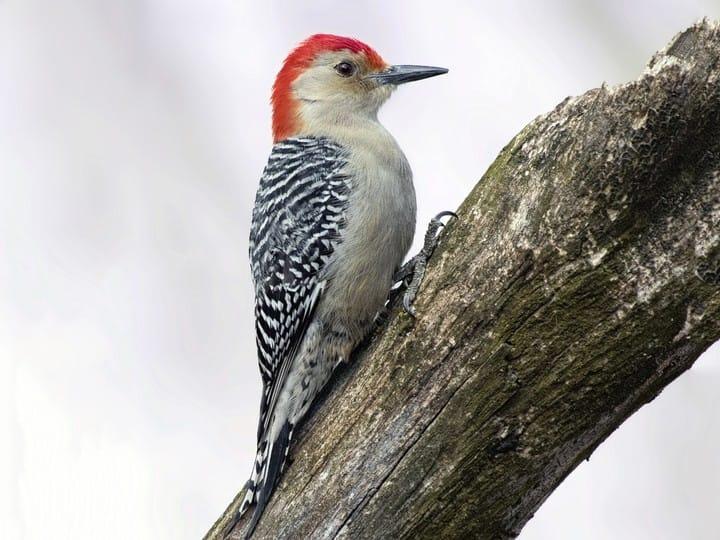Observing Woodpeckers in Florida: Types Diversity and Distribution
Observing Woodpeckers in Florida: Types Diversity and Distribution
Blog Article
Woodpeckers: A Comprehensive Overview to Understanding These Distinct Birds
Woodpeckers, with their distinctive habits and physical characteristics, have long astounded the inquisitiveness of ornithologists and nature fanatics alike. As we discover the elaborate anatomy, diverse species, and eco-friendly value of woodpeckers, a deeper recognition for these one-of-a-kind birds and the secrets they hold unravels.

Woodpeckers' Drumming Habits
Woodpeckers show a balanced and specific drumming actions that serves various crucial functions in their every day lives. This behavior is primarily connected with communication, region defense, and foraging. The distinct drumming audio is created by the fast pecking of their beaks against hard surfaces such as tree trunks, branches, or perhaps steel objects.
Interaction is a vital facet of woodpecker habits, and drumming plays a significant function in this procedure. Woodpeckers use drumming to establish their presence, attract friends, and preserve call with their partners and offspring. The regularity, strength, and duration of drumming series convey details messages to various other woodpeckers in the area.
Along with interaction, woodpeckers make use of drumming behavior for territory protection. Woodpeckers in Florida. The loud and repeated drumming serves as an advising to potential trespassers, signaling that the area is already claimed. By establishing their area through drumming, woodpeckers reduce the probability of problems over useful resources such as food and nesting sites
Moreover, woodpeckers likewise use drumming as a foraging strategy. The rhythmic pecking helps them find bugs concealing under the bark of trees by producing vibrations that disrupt the target's concealment. This behavior showcases the versatility and ingenuity of woodpeckers in using their drumming abilities for numerous vital functions.
Distinct Adaptations for Tree Climbing
Having grasped the art of drumming to communicate, protect area, and forage, woodpeckers have actually progressed one-of-a-kind adaptations that facilitate their exceptional climbing abilities in their arboreal environments. Woodpeckers have zygodactyl feet, with two toes aiming forward and 2 toes pointing backward. These tail plumes supply security and balance, allowing woodpeckers to maneuver up tree trunks with accuracy and agility.
In addition, woodpeckers have effective neck muscular tissues and a special skull structure that help in their climbing up abilities. Their solid neck muscle mass enable them to quickly eat tree bark without experiencing whiplash, while their thick skull Your Domain Name and little mind function as shock absorbers, safeguarding them from the effect of repeated drumming. These adjustments collectively allow woodpeckers to browse the vertical globe of trees with performance and elegance.

Role of Woodpeckers in Environments
Playing a critical duty in forest ecological communities, woodpeckers contribute considerably to the balance and health of their environments through their one-of-a-kind behaviors and interactions with various other types. Among the crucial environmental functions of woodpeckers is their role in regulating insect populaces. By foraging for bugs under the bark of trees, woodpeckers help control parasite populaces, protecting against outbreaks that might hurt the general wellness of the woodland. Furthermore, woodpeckers develop cavities in trees that serve as important nesting websites for a variety of other bird varieties, advertising biodiversity within the ecological community.
Moreover, the drumming and articulations of woodpeckers play a crucial function in communication and region establishment. These sounds not only offer to bring in mates yet also assist define limits in between different woodpecker territories, lowering problems and promoting an check over here unified conjunction within the forest area. In general, the existence of woodpeckers in forest ecological communities highlights their importance as keystone varieties, affecting the characteristics and operating of these environments in diverse ways.
Composition: Specialized Beaks and Feet
In the intricate web of forest ecological communities, the specialized beaks and feet of woodpeckers are important adjustments that allow them to meet their vital eco-friendly duties. Woodpeckers possess distinct physiological functions that are especially designed to aid them in their foraging and nesting behaviors.
The most unique attribute of woodpeckers is their solid, chisel-shaped beaks. These beaks are completely adapted for boring into timber to discover bugs, larvae, and sap hidden underneath the bark of trees. The strong muscle mass and durable structure of their beaks allow woodpeckers to eat a rate of up to 20 times per secondly without triggering damages to their heads.
Furthermore, woodpeckers have specialized feet that help in their acrobatic climbing capabilities. Their feet have 2 toes pointing forward and two toes directing backwards, supplying a solid grasp on upright surfaces (Woodpeckers in Florida). This distinct foot arrangement, along with rigid tail plumes that serve as a supportive prop, permits woodpeckers to hold on to tree trunks and branches easily while they search for food or dig deep into nesting cavities
Woodpecker Species Variety
Woodpeckers are a varied team of birds discovered throughout different ecosystems worldwide, with over 200 well-known species exhibiting adjustments to different environments. Woodpeckers have evolved to occupy a variety of environments, from forests and timberlands to meadows and deserts, each providing special obstacles that have affected the development of distinct woodpecker types.
These adaptations allow woodpeckers to forage successfully in their particular environments, lowering competitors among species and promoting particular niche distinction. Additionally, geographical isolation and historic variables have actually played a function in forming the distribution and variety of woodpecker varieties, leading to the wide variety of specialized adjustments seen in these fascinating birds.

Verdict
In verdict, woodpeckers are interesting birds that show distinct drumming behavior, specialized adaptations for tree climbing, and play important roles in ecological communities. With a varied range of woodpecker varieties located worldwide, these birds are necessary for preserving the wellness and balance of forests and Discover More Here woodlands.
Report this page